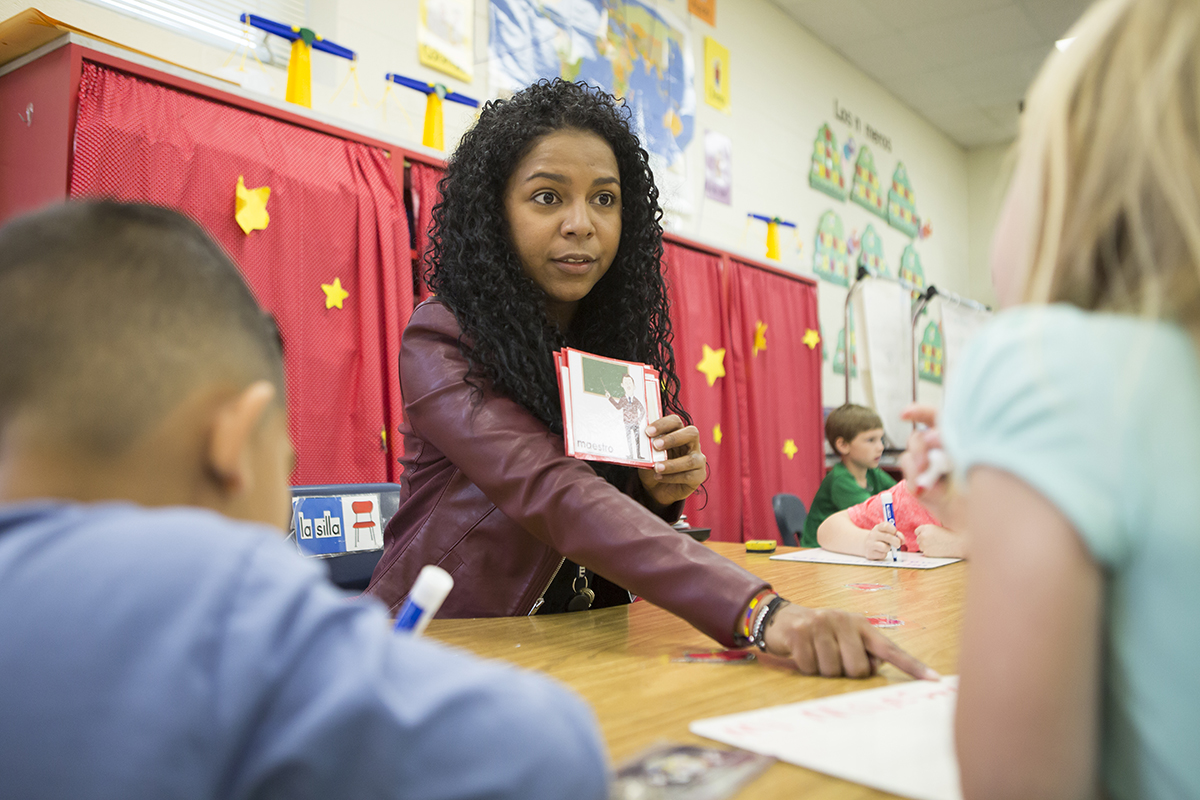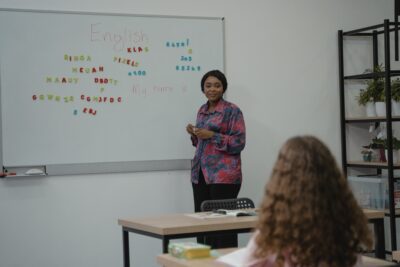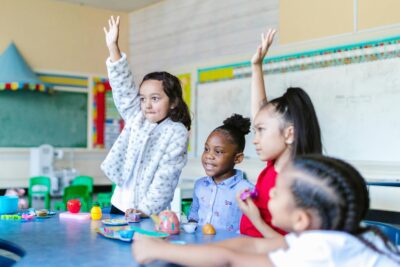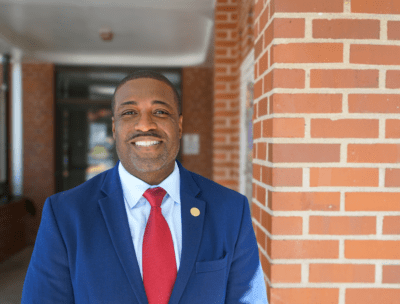
|
|
When North Carolina was named the best state for business by CNBC in 2023, most people pointed to the usual factors: low taxes, strong infrastructure, and targeted workforce development. But there’s another, often-overlooked driver behind our state’s economic rise: our schools, and specifically, our growing number of dual language immersion (DLI) programs.
Today, nearly 250 schools across North Carolina offer dual language programs, immersing students in English and a partner language — most often Spanish — for core academic subjects such as math and science. These classrooms are preparing students to speak a second language, and they’re also equipping them with the cognitive, communication, and cultural skills they need to be globally competitive — whether they pursue careers at home or around the world.
This isn’t about language for language’s sake. It’s about workforce readiness. Toyota is constructing a $13.9 billion battery plant in Greensboro. Novo Nordisk is expanding in Clayton. Siemens Mobility is building a $220 million rail manufacturing hub in Lexington. These companies — and the thousands of jobs they bring — want employees who are multilingual, adaptable, and culturally fluent. And that preparation starts in our schools.
![]() Sign up for the EdDaily to start each weekday with the top education news.
Sign up for the EdDaily to start each weekday with the top education news.
Why dual language education works
DLI is one of the most effective tools we have for preparing students to thrive in a global community and workforce. Research consistently shows that students in DLI programs gain a competitive advantage that extends across academic, cognitive, and career domains.
Stronger neural pathways
Elementary school is a critical window for language acquisition. Young children are uniquely equipped to absorb languages intuitively, and DLI programs take advantage of this developmental stage to build lasting language skills.
In addition to gaining fluency in another language, early exposure to a second language also enhances neural connections in the brain, leading to:
- Stronger memory and attention span,
- Improved executive function and problem-solving, and
- Greater cognitive flexibility and adaptability.
In fact, children who begin language learning early are more likely to achieve high levels of proficiency and carry those advantages into adulthood.
Higher academic performance
Despite concerns that learning in two languages might slow academic progress, research shows the opposite. DLI students consistently outperform their peers in core subjects — English, math, and science — thanks to their enhanced cognitive and literacy skills.
Bilingual learners also demonstrate:
- Advanced reading and writing skills,
- Increased metalinguistic awareness (the ability to think about language itself), and
- Improved ability to transfer knowledge across contexts.
Increased preparation for college and career
In addition to being personally enriching, language skills are professionally valuable. In today’s economy, which employs people from around the world, multilingual professionals are in high demand. Studies show that multilingual employees can earn up to 20% more than their monolingual peers and have access to a wider range of career opportunities, both within the United States and abroad.
Employers across industries are looking for candidates who can navigate cultural differences, communicate across language barriers, and adapt to different work environments. DLI programs help develop precisely those skills.
Related reads


Global competitiveness and leadership
Beyond academics and career readiness, dual language students gain the insights needed to compete — and succeed — in a connected global economy. They develop:
- Interpersonal skills and empathy,
- Cultural competence, and
- The ability to analyze events and systems from multiple perspectives.
While learning about the world, they learn how to operate within it as well. Understanding how the world works is critical to making informed decisions, anticipating challenges, and seizing opportunities before others do.
This perspective not only positions them for careers on the front edge of innovation and influence, but also strengthens the United States’ ability to maintain its leadership role in shaping the global future.
Positive impact on children and families
Parents across North Carolina are noticing the difference in their children. In a 2025 Participate Learning survey across 10 North Carolina school districts:
- 86% of parents said their child is excited to be in the dual language program.
- 89% reported a positive experience with their child’s teacher.
- More than 75% said their child is building career-relevant skills, such as bilingual communication, along with stronger problem-solving and decision-making abilities.
A model built on partnerships
North Carolina’s leadership in dual language education didn’t happen by accident. It’s the result of decades of vision, strategy, and collaboration.
In the early 1990s, innovative school leaders in Charlotte launched the nation’s first German immersion program. That single initiative sparked a statewide movement with support from the Department of Public Instruction, the State Board of Education, and educational consultant groups.
Through strong public-private partnerships, schools have been able to access highly qualified bilingual international educators — many coming to the U.S. for three-to-five years through one of the State Department’s cultural exchange programs — along with high-quality curricular resources and ongoing professional development. These exchange teachers bring years of experience, advanced training, and a global perspective that strengthen instruction and expand opportunities for students, ensuring DLI programs are sustained and continually strengthened.
What’s next for DLI in North Carolina?
How exactly can DLI programs be sustained and strengthened? Here’s the challenge: Growth alone isn’t enough. If we want dual language education to continue driving opportunities for both our students and economy, we must commit to expanding access, building capacity, and embedding DLI into the fabric of public education.
To build on our progress and deliver these opportunities to more students, North Carolina should focus on:
- Expanding access in underserved areas: Many rural and smaller districts face logistical and resource-based barriers to launching dual language programs. Shared resources, regional collaboration, and targeted support can level the playing field.
- Embedding DLI into district strategic plans: When dual language is seen as a core component of a district’s academic strategy — not a niche program — it receives the staffing, funding, and long-term support it needs to thrive.
- Strengthening public-private partnerships: Educational consultant organizations bring expertise in language education, teacher recruitment, and program implementation. Continued collaboration ensures sustainable growth.
- Investing in teacher development: Recruiting highly qualified educators with language proficiency is essential, and so is supporting them with coaching, curricular tools, and leadership pathways to keep them in the classroom.
- Supporting the U.S. State Department cultural exchange program: Many of North Carolina’s most successful DLI classrooms are led by international educators who come to the U.S. through a U.S. State Department-sponsored program that allows qualified international teachers to come to the U.S. on a temporary basis for three-to-five years. They then return home to share American values and culture, strengthening global connections. Continued support for this program ensures schools can access experienced teachers whose native language proficiency enriches instruction and who are vital to program quality and long-term success.
- Supporting leadership at all levels: Principals, superintendents, and instructional coaches play a pivotal role in program success. Peer networks and leadership training can empower them to lead DLI efforts with clarity and confidence.
- Communicating the value to families: It’s critical to explain the long-term value of dual language education in clear, relevant terms that are anchored in outcomes — not ideology — especially in rural areas.
- Staying focused on student outcomes: Program expansion should be guided by quality, not just quantity. Tracking outcomes such as biliteracy rates, academic achievement, and student engagement ensures we grow with purpose.
A smart investment in our future
North Carolina’s dual language programs are one of the smartest, most future-focused investments our state has made in public education. They help our young people compete, contribute, and lead in a global marketplace. It’s clear that what is good for our students is also good for our economy.
Let’s not treat these programs as an add-on. Let’s make them a foundation. Let’s protect them, scale them, and — most importantly — make them a priority in every district across the state.
The future of North Carolina’s economy doesn’t just depend on business incentives or infrastructure. It depends on what happens in our classrooms today.
Recommended reading




